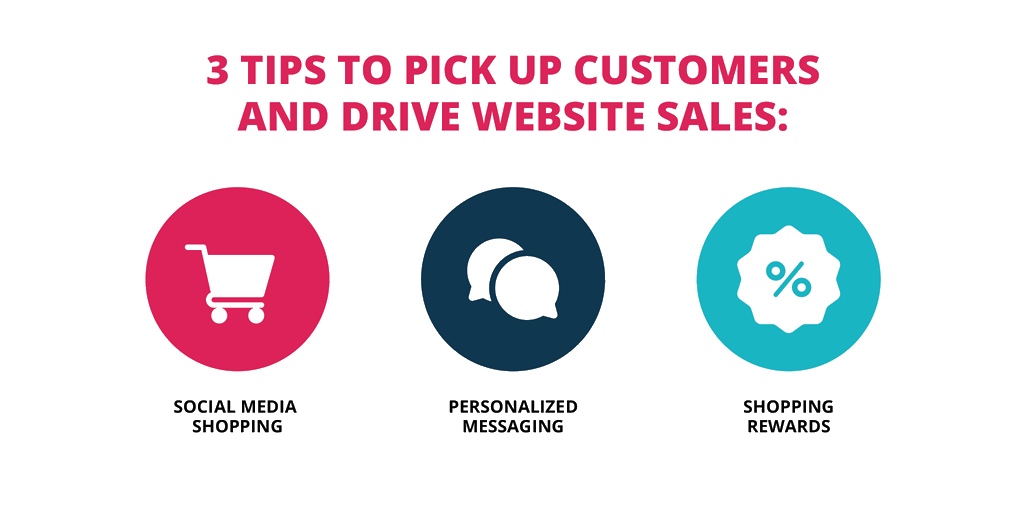
This year, customers call the shots. Forced indoors and online in 2020 because of the coronavirus, they clicked their way to a record high of 16.4% in global retail sales. As the pandemic pinnacled, ecommerce experienced 10 years of growth in just 90 days, according to a McKinsey analysis. Every age, every demo spent money through their computers and hand-held devices. For the first time, some 150 million people shopped online during the pandemic. In all, a global survey says 84% of people got their groceries, clothes, household items and dog food on the internet during COVID-19. That buckled consumers in the virtual driver’s seat, navigating to the most responsive retailers with the best pricing, and leaving the rest in the dust.
It doesn’t much matter that experts predict ecommerce will decelerate this year 7.8% as vaccinations empower shoppers to step inside those reopened brick-and-mortar stores. The consumer has experienced the rush, speed and efficiency of same-day delivery, overnight shipping, curbside pickup, and trying on clothes and other items virtually without taking off their pajamas. After that, there’s no turning back. New surveys show 79% of consumers will keep shopping online this year.
So where does that leave you? A few adjustments as to how you interact with customers, and where you to sell to them can place you on the virtual map – in a place where people will come, stay, shop, and return for more. This is where the rubber meets the road. You’ll want to be there because e-commerce is expected to reach five trillion (yes, with a ‘t’) in sales this year, according to the BCG Consumer Sentiment survey.

Here are 3 tips to pick up customers and drive website sales:
1. Social media shopping. Go get ’em. The days of waiting for the customer to come to you are long gone. It’s time to go pick them up with shoppable moments. More and more, that means idling in social media.
New data shows social media shopping, or allowing people to buy products within a social media platform, can pay off big. Fifty-five percent of shoppers have made purchases through a social media channels like Facebook, Instagram and Pinterest.
After news about the novel virus hit (March – April) marketing on Facebook and Instagram saw a 36% growth in monthly active users; a trend not slowing down.
Instagram is the most popular platform for shopping. In fact, 70% of consumers look at this platform to discover new products. Instagram has made it easy for people to see, tap and shop. Retailers can tag products in photos, videos and stories. With a tap, people will get a full description, more photos, and see other items you sell. Instagram hit the gas recently with a new Instagram checkout app. The native checkout features make it even easier for shoppers to go from browsing to buying.
Last year, Facebook launched ‘Facebook Shops,’ where retailers can build custom stores complete with the ability to create collections of items, and manage orders and shipping. Customers can place their orders within Facebook or navigate to your website to complete their purchases.
Retailers are also showcasing their products with success on Pinterest Business with buyable pins. Pinterest also offers ‘Shop the Look’, which lets people buy the actual items shown in the images. Retailers can also upload product catalogs on the platform.
If your target audience is Gen Z, consider the video app TikTok. Late last year, TikTok partnered with Shopify to allow its one million retailers to reach the generation and drive sales. The new app allows merchants to create in-feed video content for their products targeted to TikTok’s 100 million users in the United States.
China’s WeChat app is also highly engaged in social shopping, allowing its millions of users to discover new experiences and products, buy them, book them, and tell friends about them. The country’s most popular app combines social media, chat and payment features to become a powerful promotional tool for online businesses.
2. Talk to me, Goose. This popular line from the movie ‘Top Gun’ is a call from one fighter pilot (Maverick) to his partner (Goose) to communicate. This is the same message consumers are sending online retailers this year in what is being called ‘conversational commerce.’ Studies show 72% of people will only engage with retailers who use personalized messaging.
Retailers are listening. In a 4-month study last year, interactions between customers and merchants increased by 85% on the Shopify platform compared to the same period in 2019. Here’s the kicker: Sales attributed to the chat increased by 185% during that same time period.
The quality of the digital user experience is a key factor for new and old merchants alike, according to a new survey. In fact, 48% of consumers said a good online or mobile app experience is more important to them than the price of products.
The conversational commerce has to be genuine to covert the customer to a buyer. Personalization creates long-lasting customer relationships. So, merchants should record their customers’ buying habits (with their consent) in order to recommend new products and experiences. To optimize the customer experience, the information best compiled with master data management strategies.
Facebook’s Messenger now has a new channel for customers to interact with brands in real-time with the help of chatbots powered by AI. They can answer questions and offer specials.
Chatbots allow retailers to respond to 80% of their customers 24/7, and can quickly connect shoppers to human agents when needed.
The baby formula brand Enfamil builds relationships by asking about the due date of babies when pregnant moms sign up for emails. Then, the business provides the mothers-to-be helpful information throughout their pregnancy and the child’s first few years of life.
Most shoppers, 72%, prefer self-service with instant chats, bots and other digital self-service tools because they’re convenient and easy, according to reports.
Personalization aside, privacy and security are still a top concern. If you are collecting any sensitive data on your website or from social media users, you must comply with data privacy regulations. Also, it’s important to be transparent with shoppers about what you’re collecting and how you’re protecting their data to make them feel comfortable shopping with you.
At Red Maple, we provide the most secure software on the market. Our Advanced Credit Cards for F&O, which integrates with Microsoft Dynamics 365, securely accepts and processes credit card payments. We also offer a revolutionary secure, hosted credit card solution called StagedPay. It allows merchants to secure confidential information and dramatically minimize the risk of theft, fraud and data breaches.
3. Let’s make a deal. Given a choice between the same product on two websites, 89% of customers will go for the good deal. Merchants can lure them in (and keep them with great customer service) with specials, cash back, coupons and promo codes.
In fact, with the economy, couponing is growing. Statistics show 90% of all consumers have used coupons in some way, and 30% of millennials always use coupons. And while a study shows the value of digital coupon redemption reached $47 billion dollars in 2017, 77% of shoppers spent $10 to $50 more than intended when they used the coupons.
Websites like Rakuten boast they’ve changed the way people shop online by giving cash back and shopping rewards that have earned its 14 million members more than $1 billion from top stores. Rakuten’s mission is to connect members with merchants and market their brands.
The bottom line is that customers aren’t ever going to back-up, do a U-turn or slow down. In 2021, consumers won’t settle for sluggish websites, impersonal transactions and delays in delivery. These three tips will get you up to speed, on the road to meeting new shoppers, and converting them into lifelong customers.